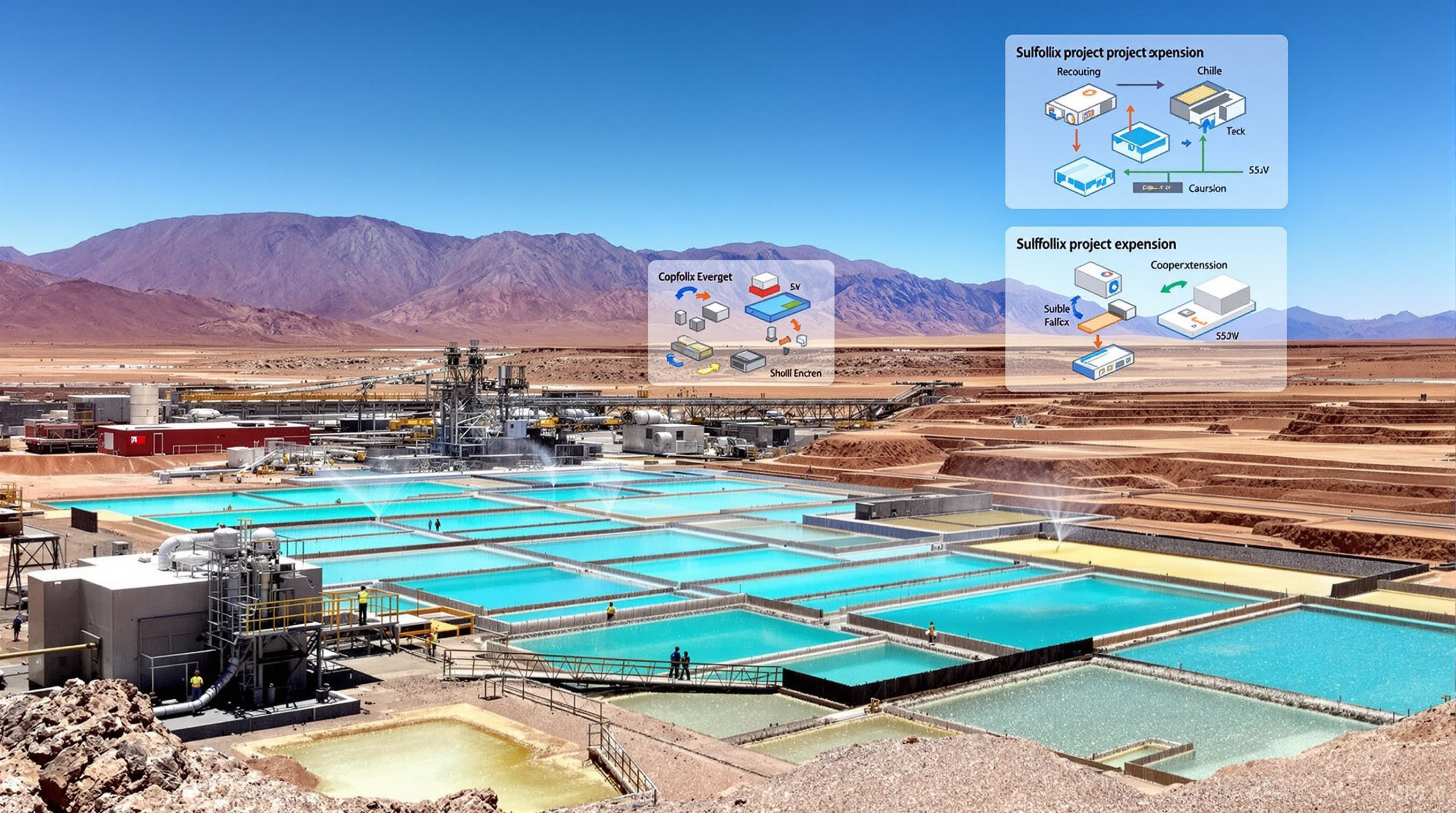Revolutionizing Underground Operations: How Private 5G Networks Are Transforming Mining
What Are Private 5G Networks in Mining?
Private 5G networks represent a revolutionary advancement in mining connectivity infrastructure, offering dedicated wireless communication systems specifically designed for the unique challenges of mining environments. Unlike public networks, these private systems provide:
- Enhanced security through isolated network architecture
- Guaranteed bandwidth without public traffic competition
- Ultra-low latency essential for real-time operations
- Customizable coverage tailored to complex underground environments
- Dedicated spectrum for mission-critical applications
These networks form the backbone of modern digital mining operations, enabling everything from autonomous vehicles to real-time monitoring systems in environments where traditional connectivity solutions fail.
The Critical Need for Advanced Connectivity in Mining
Mining operations present some of the most challenging environments for wireless communications:
- Deep underground tunnels extending kilometers below surface
- Complex networks of shafts and chambers creating signal dead zones
- Harsh conditions including dust, moisture, and temperature extremes
- Constantly changing physical environments due to ongoing excavation
- Remote locations often beyond public network infrastructure
- Critical safety requirements demanding reliable communications
Traditional technologies like Wi-Fi and walkie-talkies have significant limitations in these settings, creating a connectivity gap that private 5G networks are uniquely positioned to fill. The rapid development of mining evolution trends shows how connectivity has become a fundamental requirement for modern operations.
How Do Private 5G Networks Transform Mining Operations?
Enabling Remote Operations and Automation
Private 5G networks facilitate a fundamental shift in mining operations by supporting:
- Tele-remote vehicle operation from surface control centers
- Autonomous drilling and excavation systems with real-time monitoring
- Remote equipment control across multiple mine levels
- Centralized operational oversight through integrated command centers
This capability dramatically reduces the need for human presence in hazardous areas. According to industry experts, fully automated mining operations could potentially relocate up to 90% of underground workers to safer surface environments, significantly improving safety profiles while maintaining productivity. The integration of AI in mining further enhances these capabilities through intelligent decision-making systems.
Revolutionizing Underground Communications
The evolution of mining communications shows dramatic improvement with private 5G:
| Traditional Systems | Private 5G Networks |
|---|---|
| Limited range walkie-talkies | Site-wide coverage including deep tunnels |
| Unreliable connections | Consistent, high-quality voice and data |
| Separate systems for voice/data | Integrated communications platform |
| Manual status reporting | Real-time personnel tracking |
| Limited emergency response | Instant alerts and coordination |
These improvements create a seamless communication environment across all mine levels, even at depths exceeding 1.5 kilometers, ensuring workers can maintain contact in emergency situations and coordinate complex operations with precision.
Creating Digital Twins and Real-Time Visualization
Private 5G enables comprehensive digital transformation through:
- 3D mapping of entire underground environments
- Real-time positioning of personnel and equipment
- Integrated sensor networks monitoring environmental conditions
- Digital twin technology providing virtual representations of physical assets
- Centralized operational dashboards for complete situational awareness
These capabilities give mining operators unprecedented visibility into their operations, allowing them to make data-driven operations decisions and respond rapidly to changing conditions.
What Technical Challenges Do Private 5G Networks Address?
Overcoming Underground Connectivity Barriers
Mining environments present unique technical challenges that private 5G networks are specifically designed to address:
- Signal propagation in confined spaces through optimized antenna placement
- Network redundancy ensuring continuous operation during maintenance
- Specialized equipment hardening for dust, moisture, and vibration resistance
- Seamless handover between network zones during movement
- Edge computing integration for local processing in remote areas
- Power management for extended operation in areas with limited infrastructure
These technical solutions create reliable connectivity foundations that support the full range of digital mining applications. According to research from Australian Mining, these specialized networks provide up to 10 times better coverage in challenging underground environments compared to conventional wireless technologies.
Ensuring Mission-Critical Performance
Private 5G networks deliver performance metrics essential for mining operations:
- Latency under 10ms for real-time control applications
- 99.999% reliability for safety-critical systems
- Bandwidth exceeding 1Gbps for high-definition video and sensor data
- Network slicing to prioritize critical applications
- Quality of Service guarantees for different operational needs
This performance profile enables applications that would be impossible with conventional wireless technologies, particularly in challenging underground environments.
What Real-World Applications Are Emerging?
Case Study: Callio Pyhäjärvi's Mining Innovation Testbed
The Callio FutureMINE site in Finland demonstrates the transformative potential of private 5G in mining. This former copper mine, reaching depths of 1.5 kilometers, has been converted into a next-generation testbed where:
- A comprehensive private 5G network deployed by Boldyn Networks and Nokia provides seamless connectivity across multiple underground levels
- The network supports a vast tunnel system stretching several kilometers
- Mining technology manufacturers like Normet test autonomous vehicles in realistic conditions
- Software companies develop integrated operational control systems
- New safety protocols and emergency response systems are validated
This real-world implementation showcases how private 5G can transform even the most challenging mining environments into connected, intelligent operational spaces.
Autonomous Vehicle Operations
Private 5G networks are enabling significant advancements in autonomous mining equipment:
- Remote-controlled loaders and trucks operating in hazardous areas
- Autonomous drilling systems with precision guidance
- Self-navigating transport vehicles moving between mining levels
- Coordinated fleet management across multiple autonomous units
- Real-time telemetry and diagnostics for preventive maintenance
These autonomous systems improve safety by removing personnel from dangerous environments while simultaneously increasing operational efficiency and equipment utilization. The ongoing mining transformation trends show autonomous operations as a key development area for the industry.
Enhanced Safety and Emergency Response
Safety applications leveraging private 5G include:
- Real-time personnel tracking with instant location information
- Environmental monitoring for gas detection and ventilation control
- Automated evacuation management with dynamic routing
- Wearable safety devices connected to central monitoring
- Video surveillance of critical operational areas
- Predictive analytics for identifying potential safety risks
These systems create multiple layers of protection for mining personnel, significantly reducing accident rates and improving emergency response capabilities.
How Does Private 5G Compare to Alternative Technologies?
Performance Comparison with Traditional Mining Networks
When evaluating connectivity options for mining operations, private 5G offers substantial advantages:
| Capability | Wi-Fi | LTE | Private 5G |
|---|---|---|---|
| Underground coverage | Limited | Good | Excellent |
| Latency | Variable (20-100ms) | Moderate (15-50ms) | Ultra-low (<10ms) |
| Bandwidth | Up to 600Mbps | Up to 300Mbps | 1Gbps+ |
| Device density | Moderate | Good | Very high |
| Reliability in harsh conditions | Poor | Moderate | Excellent |
| Support for mission-critical applications | Limited | Moderate | Comprehensive |
This performance profile makes private 5G the preferred option for mining operations requiring reliable, high-performance connectivity in challenging environments.
Limitations of Public Networks for Mining Applications
Public cellular networks present significant challenges for mining operations:
- Limited or non-existent coverage in remote mining locations
- Inability to penetrate deep underground environments
- Shared bandwidth affecting application performance
- Lack of prioritization for critical mining systems
- Security concerns with data traveling over public infrastructure
- Limited customization for specific operational requirements
These limitations highlight why purpose-built private networks are essential for modern digital mining operations.
What Are the Implementation Considerations?
Deployment Strategies for Different Mining Environments
Private 5G implementation varies significantly based on the mining context:
- Underground mines require distributed antenna systems and specialized signal propagation planning
- Open-pit operations need wide-area coverage with height considerations
- Processing facilities benefit from high-density, high-bandwidth configurations
- Remote sites may require satellite backhaul integration
- Hybrid environments need seamless transitions between coverage zones
Successful deployments require comprehensive site surveys, RF planning, and customized network designs that address the specific challenges of each mining environment.
Integration with Existing Mining Systems
Effective private 5G implementation requires thoughtful integration with:
- Legacy communication systems during transition periods
- Operational technology networks controlling industrial processes
- Enterprise IT systems for data management and analysis
- Safety and emergency response infrastructure
- Third-party equipment and sensors
This integration creates a unified digital ecosystem that maximizes the value of both existing investments and new capabilities enabled by private 5G.
What Future Developments Are on the Horizon?
Emerging Technologies Building on Private 5G Infrastructure
The private 5G foundation enables numerous advanced technologies:
- AI-powered predictive maintenance reducing equipment downtime
- Advanced robotics for hazardous area operations
- Augmented reality guidance for maintenance procedures
- Drone-based inspection of inaccessible areas
- Edge AI processing for real-time decision support
- Advanced analytics optimizing resource extraction
These technologies represent the next frontier in mining innovation, building on the connectivity foundation that private 5G networks provide.
The Path to Fully Automated Mining Operations
Industry experts envision a progressive evolution toward autonomous mining:
- Enhanced monitoring through comprehensive sensor networks
- Remote operation of individual equipment from surface control centers
- Semi-autonomous systems with human supervision
- Coordinated autonomous fleets operating in defined areas
- Fully autonomous mining operations with minimal human intervention
Private 5G networks form the essential communication backbone for this evolution, enabling each stage of automation with the required reliability, bandwidth, and latency characteristics. As highlighted in a report by Ericsson, private 5G is expected to be the primary enabler of fully autonomous mining operations by 2030.
What Are the Business Benefits of Private 5G in Mining?
Quantifying Operational Improvements
Private 5G networks deliver measurable business benefits:
- Productivity increases of 15-30% through optimized operations
- Equipment utilization improvements of up to 25%
- Maintenance cost reductions of 10-20% through predictive approaches
- Energy consumption decreases of 10-15% through optimized processes
- Extended mine life through more precise resource extraction
- Reduced downtime from improved coordination and predictive maintenance
These improvements translate directly to bottom-line results, creating compelling business cases for private 5G investments.
Safety and Sustainability Advantages
Beyond operational efficiency, private 5G enables:
- Significant reduction in workplace accidents through reduced human exposure
- Improved environmental monitoring and compliance
- Optimized resource utilization reducing waste
- Reduced energy consumption through efficient operations
- Enhanced reclamation planning through comprehensive data collection
- Improved community relations through transparent operations
These benefits address critical ESG considerations that are increasingly important to mining stakeholders. The implementation of sustainable mining practices has become a key priority for the industry, and connectivity plays a critical role in enabling these initiatives.
How Should Mining Companies Approach Private 5G Implementation?
Building a Strategic Roadmap
Successful private 5G implementation requires a phased approach:
- Assessment of current connectivity challenges and operational requirements
- Pilot deployment in high-value areas to demonstrate benefits
- Infrastructure planning for comprehensive coverage
- Phased implementation prioritizing critical applications
- Continuous optimization based on operational feedback
- Capability expansion as new technologies emerge
This strategic approach ensures that investments deliver maximum value while managing implementation complexity.
Selecting the Right Technology Partners
Key considerations when evaluating private 5G partners include:
- Mining industry experience and understanding of unique operational challenges
- End-to-end capability from network design through implementation and support
- Integration expertise with mining operational technology
- Scalability to grow with evolving requirements
- Ongoing innovation to incorporate emerging technologies
- Global support capabilities for geographically distributed operations
The right partnership approach creates a foundation for long-term success beyond the initial network deployment.
FAQ: Private 5G Networks in Mining
What makes private 5G different from public cellular networks?
Private 5G networks are dedicated systems deployed specifically for mining operations, offering complete control over coverage, capacity, and security. Unlike public networks, they provide guaranteed performance for critical applications, can be customized for specific operational requirements, and ensure data remains within the mining company's control.
How long does it take to implement a private 5G network in a mining operation?
Implementation timelines vary based on mine complexity, but typically range from 3-6 months for initial deployments and 12-18 months for comprehensive site coverage. Many mining companies adopt phased approaches, beginning with high-priority areas before expanding to full site coverage.
What are the primary security considerations for private 5G in mining?
Key security aspects include physical infrastructure protection, network segmentation for operational technology, encryption for sensitive data, access control systems, and integration with existing security frameworks. Private networks offer significant security advantages by isolating mining operations from public networks.
How do private 5G networks operate in areas without existing telecommunications infrastructure?
Private 5G deployments in remote locations typically incorporate satellite backhaul, microwave links, or fiber connections to establish connectivity. The local private network operates independently, ensuring continuous operations even if backhaul connections experience interruptions.
What training is required for mining personnel to utilize private 5G-enabled systems?
Training requirements vary by application but generally include familiarization with new communication devices, protocols for remote operation systems, data interpretation from connected sensors, and emergency procedures. Many mining companies implement comprehensive digital skills programs alongside technology deployments.
Ready to Stay Ahead of Mining Technology Innovations?
Explore how the latest technological breakthroughs like private 5G networks are transforming the mining sector by visiting Discovery Alert, where our proprietary Discovery IQ model delivers real-time alerts on significant ASX mining advancements and investment opportunities before the broader market.




